A Jewish City
The Realejo is the Jewish quarter in Granada. Located right in the town centre, it was a bustling community at the time of Nasrid rule. The Jewish community was once so important. In fact Granada was called´Granada of the jews´ Garnatha al Yejud (in Arabic, غرناطة اليهود).
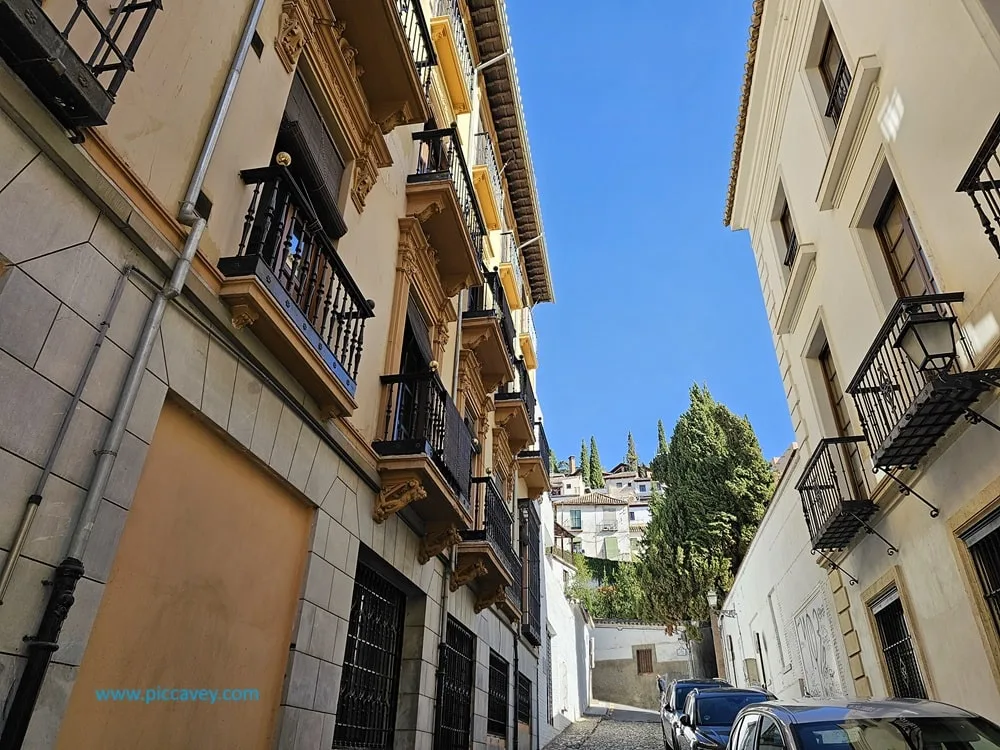
Realejo Quarter
Jewish history in Granada goes back as far as the year 135. Although some historians refer to the year 70 when jewish settlements may first have been present. This was a time when new lives in Spain evolved. Leaving their native Israel behind at the time of the second destruction of the temple of Jerusalem. The first time anything was properly recorded was around 303-306 in the cannons of the Synod of Elvira.
The Realejo quarter began to take shape from the year 711 when muslims came to Granada. From 912 onwards when Abd ar Rahman III ruled the Jews really prospered in Al-Andalus and the population grew. During this time they studied Science, commerce and industry. They also traded in the cotton and silk trade important in Granada. A business that prospered and grew over the centuries.
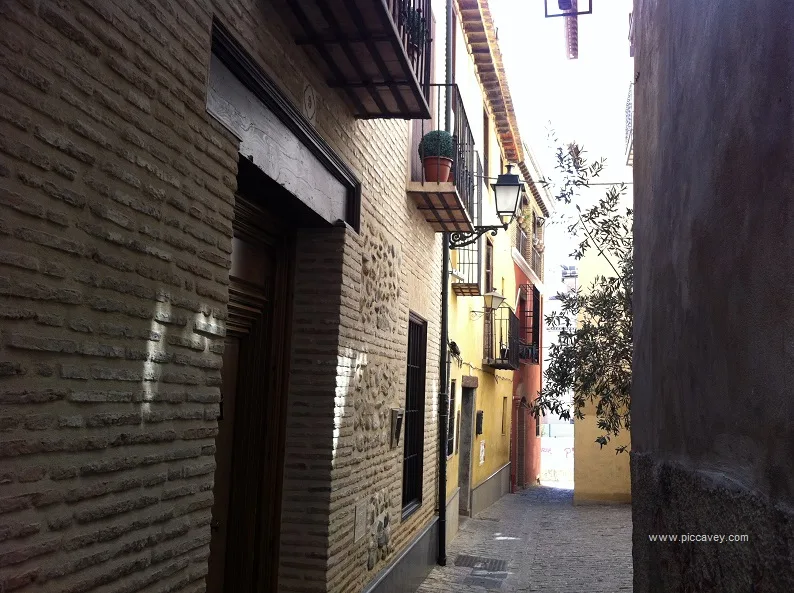
Jewish Population in Granada
Between 1013 and the early 13th century the Jewish population flourished in Granada. Many coming from Cordoba where the Ziri Dynasty were growing in power. In the 11th century the Jewish community was mainly located around the area of the River Darro (Carrera de Darro)
Only in later centuries did the jewish district around Colina Mauror, Pavaneras or San Matias grow. In 1494 the jewish population in Granada was around 20,000.
Until the beginning of the 11th century the Jewish and Muslim settlers collaborated and lived together without friction.

Jewish Cemetery
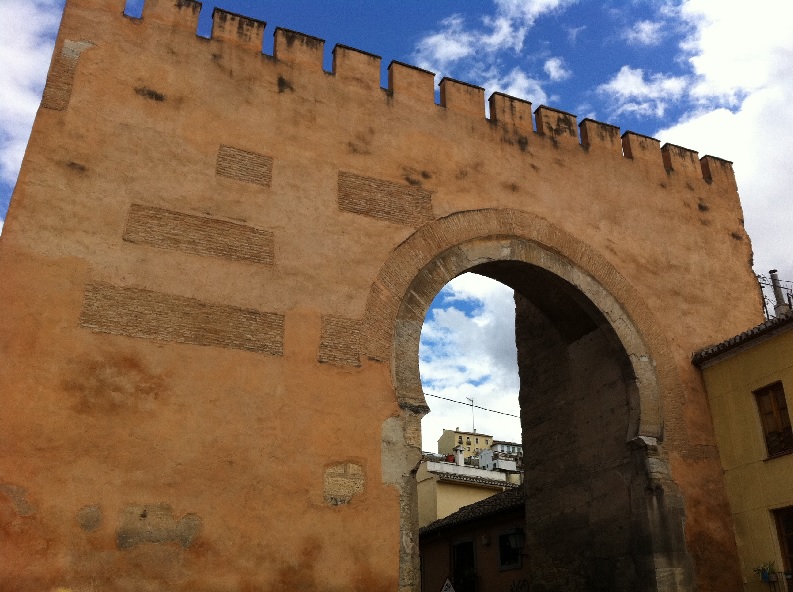
Joseph Ibn Naghrela
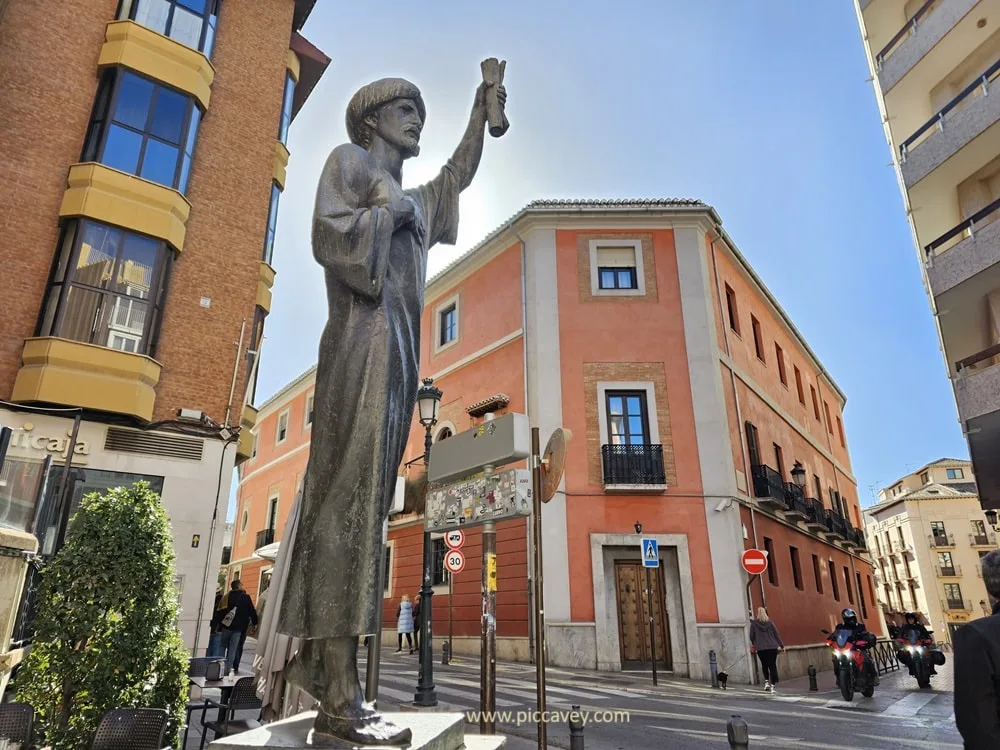
A City of Translators
Yehuda Ibn Tibon
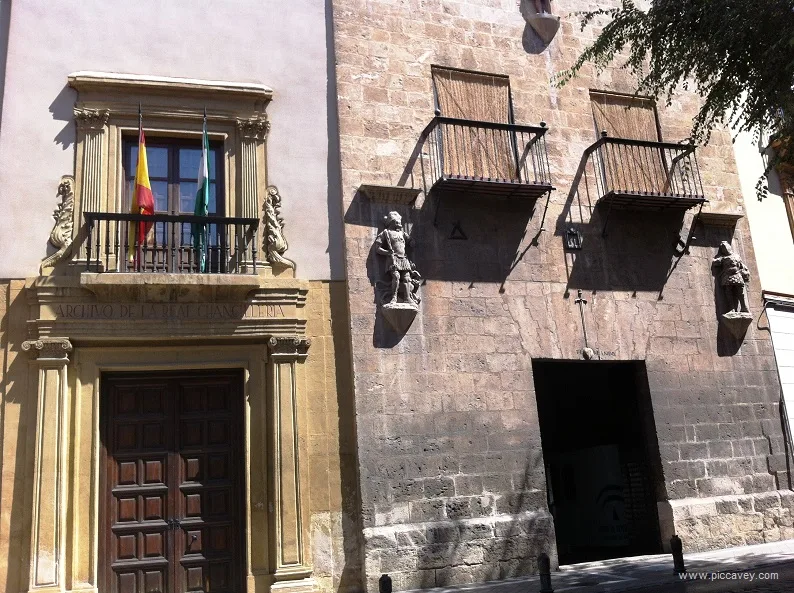
Calle Pavaneras
It is recorded that by the end of the fifteenth century the jewish population in Granada was close to 50,000. Working mainly as tax collectors, doctors, ambassadors or as merchants and tradesmen.
Along Calle Pavaneras in Granada many Jewish craftsmen such as cobblers and leather tanners had their workshops. In the same area there were traders in wool, linen, cotton and silks. Also silver and gold traders too. It was quite common that they could speak several languages.
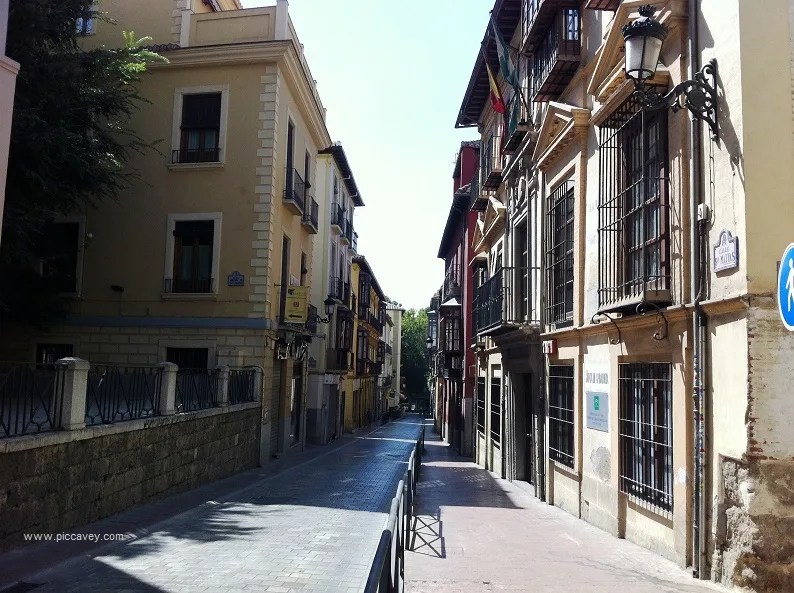
Missing Synagogue
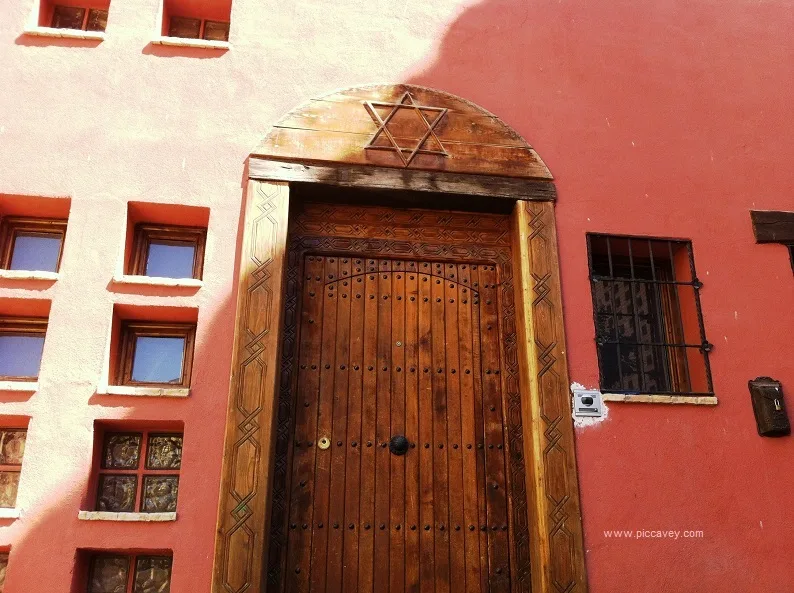
Jewish Legacy in Granada
There are plenty of recipes using aubergines which was typical in Sefardi cuisine. Rabbis such as Isaac ben Sheshet Barfat, (Barcelona) Simon ben Semah Duran, (Majorca) or Abraham ben Hakin all came from Spain. Travelling from Northern Africa to practise in new communities across the water.
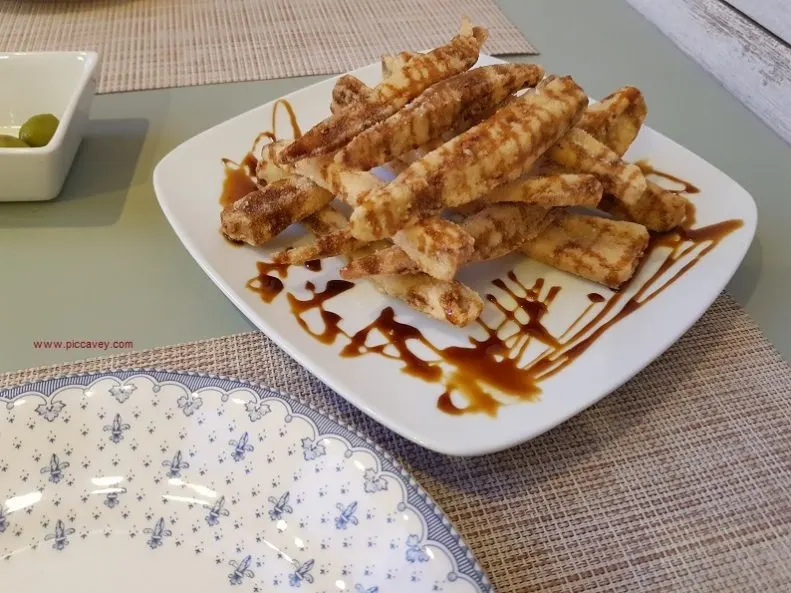
The Alhambra Decree of 1492
We have decided to give order to all jews, men and women to abandon our kingdom and never return. With the exception of those who have been baptized. All the rest must leave our territory by 31 July 1492 to not return. Death penalty and confiscation of belongings will be applied.
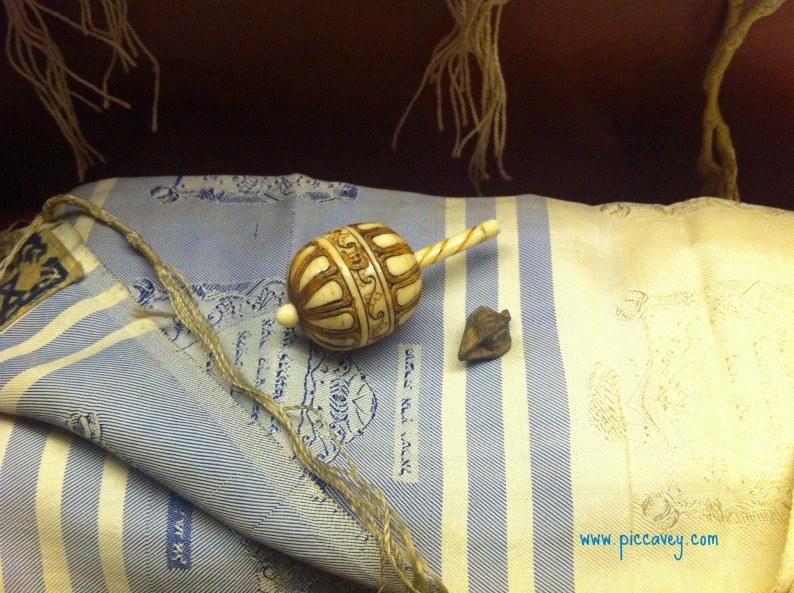
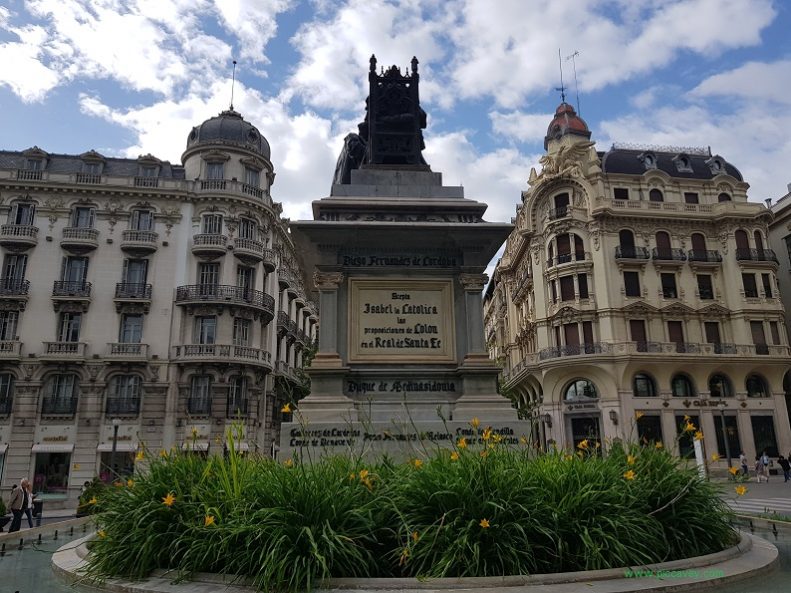
Modern Granada
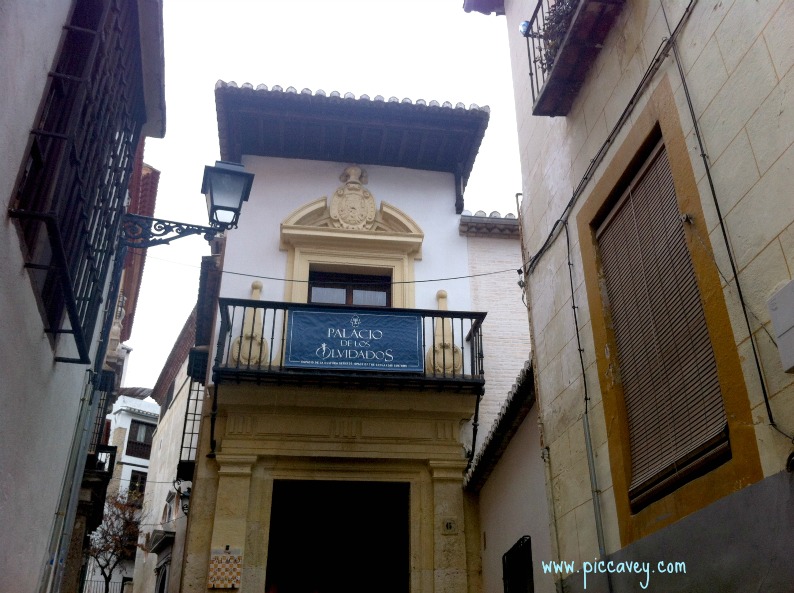
Palacio de los Olvidados
This Museum called Palace of the Forgotten has some jewish items inside. A collection of different exhibits curated from several collections. This also has lots of material about the Spanish Inquisition. ; (
They offer Flamenco Shows within this space every evening. Make a reservation online for the Flamenco performance Get there 15 minutes ahead of the show to get the best seats.
Granada has few traces of its sephardic past. There are few sights to taken in today.
Perhaps the best way to see is to take a guided tour around the Realejo quarter with a specialised historian. Noticing the narrow streets and retracing the stories of notable buildings in the district.
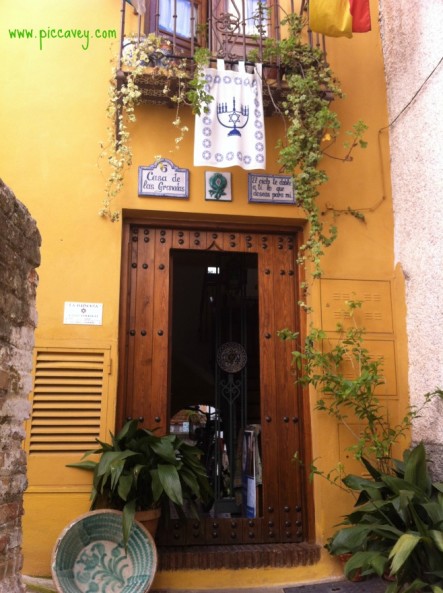
Centro Sefardi
This family home at Placeta Berrocal gives you insight into a typical Realejo house. Dedicated to Sefardi culture this centre educates visitors in jewish culture. There are some exhibits and a small book collection. (pictured above)
Check opening times as they vary depending on the time of year.
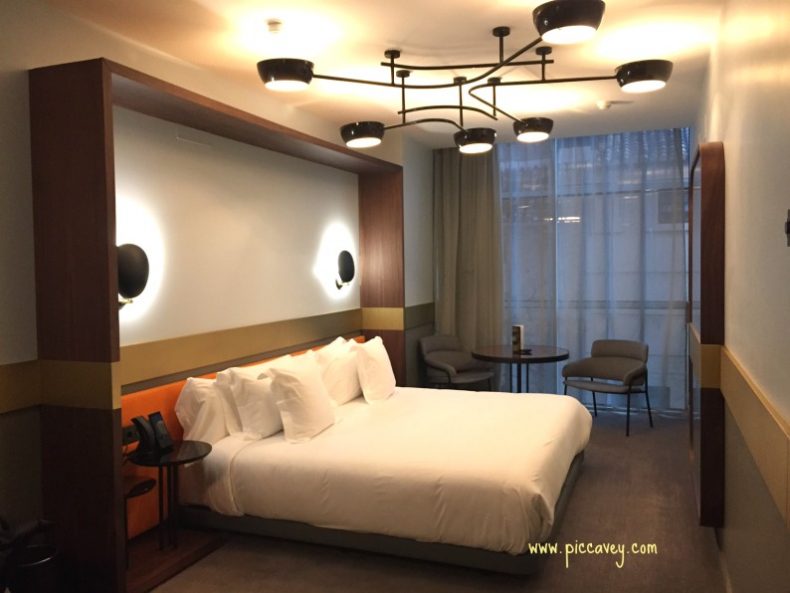
Granada Accomodation – Realejo
- Boutique Hotel Gar Anat
- Hotel Hesperia Granada
- Boutique Hotel Palacio de las Navas
- Hotel Molinos Granada
- Hotel Confort Dauro II
Other Places of Interest
Lucena
Known as Pearl of Sefarad, Lucena was an important Jewish settlement from 9th – 12th century. Located in Cordoba province, this town has a Jewish Necropolis from the 11th century. This site has 346 tombs, showing how important this community was.
Some of the tombstones have hebrew text still visible. (Visits by prior arrangement)
Jehuda ha Leví, Abraham Ibn Ezrá and even Maimónides all lived in Lucena.

Ubeda
In Jaen province the town of Ubeda has an historic synagogue. Sinagoga del Agua, a building dates back to the 14th century. Inside you can see the Mikveh, the womens gallery and the arches of the synagogue.
This is open for Public and Private visits now. More details at Artificis or you can get online a Ubeda + Baeza Tourist Pass
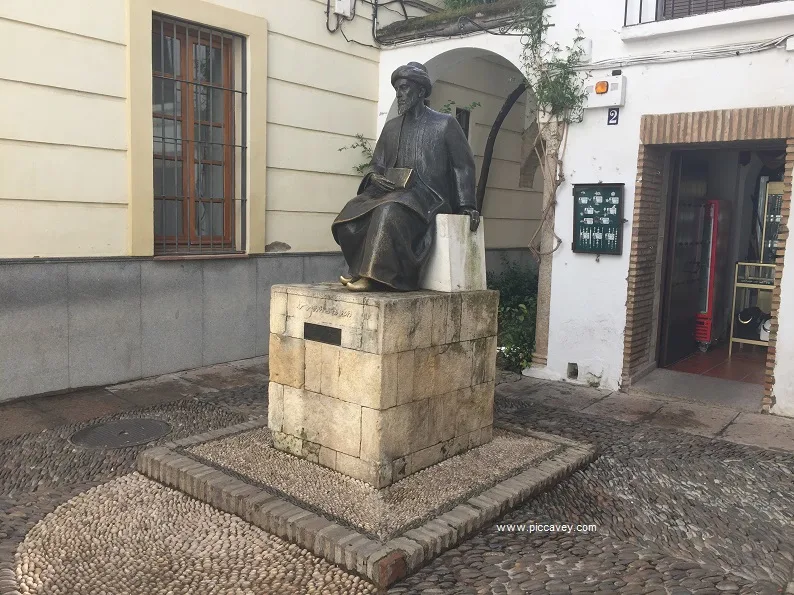
Cordoba
The only conserved Synagogue in Andalusia is in Cordoba. Built in 1315. (In Spain there are only two other ones, in Toledo). This synagogue is small, perhaps belonging to a family. It is no longer in use for worship now but it is open to visitors.
The Jewish Quarter of Cordoba is also an important legacy of Al Andalus. (Dating back to 10th-15th century). This area is on streets: Deanes, Manríquez, Tomás Conde, Judíos, Almanzor and Romero. Cordoba was the birthplace of the Jewish philosopher Maimonides.
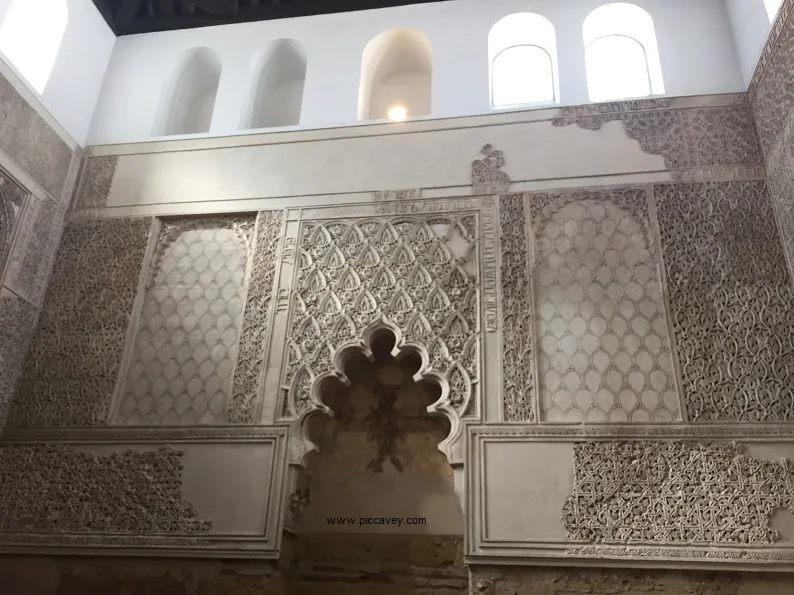
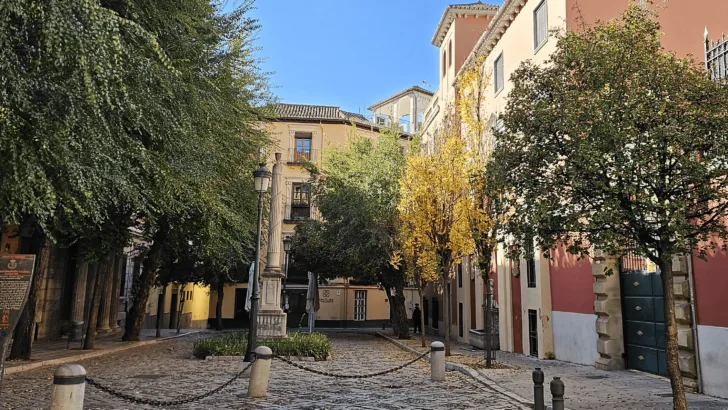
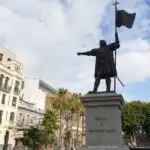
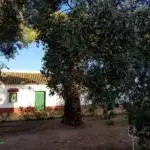
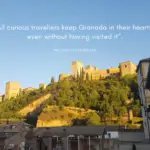

mOLLY, hI, Any Jews living in Granada at this time – even Expats? Any gatherings on Jewish holidays?
Your blogs are marvelous!
Hello, Most gatherings and events are cancelled due to COVID here in Spain. Thanks for reading
HI. I am researching a novel set in 15th C Granada and wonder if you could clear up an information conflict. You write that there were 20,000 Jews still living in Granada at the time of the handover to the Catholic Kings in 1492. I have read elsewhere that the highly orthodox Almohads effectively wiped out the Jewish presence in Al Andalus when they took over in the 12th C, and that those Jews who did not leave were forcibly converted to Islam. The impression I get is that, even though their conversions would have rarely been sincere, this would have meant the end of any sizeable identifiably Jewish community in Granada.
After the Almohads collapsed after Navas de Tolosa, was there a large-scale return/reversion in Granada? Can you point me to any historical material covering this period, i.e. the last couple of centuries of Jewry under the Nasrids? I would be very grateful for any hints or links you could help me with.
I love your blog, BTW, I lived in Granada for a good part of 2017 and still miss it every day. Your blog brought back many precious memories.
Hi Christopher, thanks for reading.
The information is sketchy around these periods of time and there are few reliable online resources. I found this document that may help with your research.
http://www.cepedrosuarez.es/docs/boletines/B19_2006_02_GARRIDO.pdf
Granada had 60.000 citizens in 1200 but then grew hugely in 1330 to a population of 150,000 this is around 100 years after the Battle of Tolosa.
Hope you are doing well
Best wishes
Molly
Greetings Molly
I was fascinated by your article on the Jews in Granada. I lived in Mexico City in 2013-14, with my Mexican/Jewish Girlfriend, whose last name is Franco. She had spent a year in Granada in 2011 – and talked about it with intense enthusiasm!
Myself – I was stationed in Rota, Spain in 1979-80, and travelled to Granada with my visiting Mother, and younger Brother.
I fell deeply in Love with Granada, and can remember the alpine scent, the long shadows in the narrow streets, and the gauzy texture of the exotic atmosphere of the city! I have longed to return to Granada – it was the last place I walked with my mother, as she passed-away from an illness in 1982.
I am now in Philadelphia, composing beautiful, haunting and dream-like music for piano, guitar, cello, percussion and electronics.
I would like to return to Granada before tRump gets re-elected – if that’s possible! – and spend a year absorbing the spirit of Granada, Lorca, and the Sierra Nevada – research the music of the Sephardic Jews who lived there, and compose and perform new music.
It would be great to meet you, and learn more from you!
Thank you for sharing your amazing knowledge, and insight.
Mark D.M
Great to hear from you. Granada is such an inspiring city.
Over the centuries it has been the subject of paintings, music and all kinds of art.
Best wishes from Andalucia
Molly,
My daughter has just moved to Granada and I wondered how she connects with the expat community.
Thank you for any help you can give me for Valerie.
Bryna Weiss
Hello Bryna
Of course, I will send a few details by email
Thanks for reading
Molly
Hi Molly
Please advise where I can go to shul as it’s Rosh and I’ve just arrived.
Good Yom Tov
Hi Joseph
I have just emailed my reply
best regards
Molly
Here in Granada now and looking forward to visiting the Realejo area later today. Off to Toledo tomorrow for another Jewish hit. Thanks for your blog.
Have a great trip. Toledo has some fabulous architecture too
The Jewish museum is now called Museo Sefardi, in the same location (Placeta Berrocal 5). Worth calling first (check them out on Facebook for the phone number) as they were closed on the two occasions we tried to visit.
Many thanks, yes this article is due for an update, many things have changed since I wrote it all those years ago
Best regards
Molly
[…] Realejo: This used to be a very important part of the city in the 8th century when the Moors arrived in Granada. It was called Garnata al-Yahud (Granada of the Jews) by the moors. During the time of Moorish rule, it is said that Jews lived peacefully in the city but following the Christian conquest by the Catholic monarchs, the Jews were expelled and the Jewish barrio was destroyed and renamed El Realejo. These days it’s marked by beautiful Andalusian villas and good tapas bars. For an informative read on this part of Granada click here. […]
Hi and thanks for such a detailed insight.
My wife and I are travelling through the same cities in October.
Thanks
Thanks for stopping to read, I´m pleased this was useful information for your travel planning
Enjoy your travels
Thanks for the insights. We have just arrived in Barcelona and will fly south to visit Granada, Seville, Córdoba, Toledo and Madrid. An excellent History of Midieval Jews by Harris was published in 1916. It is an amazing recounting of the Jerusalem of the West as the Toledo area had come tone known by the 12th century. I think you can find the book in Google in PDF form. There were over 100 synagogues in the area around Córdoba and Toledo.
Dont miss the streets of El Call in Barcelona, the Synagogue in Cordoba and Toledo.
Thanks for the information about the book, I´ll track it down.
Enjoy your travels.
[…] The Realejo Quarter:When you walk through the historic city of Granada, you come to the area known as Realejo, which is right in the town centre. This district was the Jewish quarter at the time of the Nasride rule. The Jewish population was once so important that Granada was once known from the Al-Andalus Country under the name of Granada of the jews (in Arabic, غرناطة اليهودgharnāṭah al-yahūd). […]
[…] Realejo This used to be a very important part of the city in the 8th century when the Moors arrived in Granada. It was called Garnata al-Yahud (Granada of the Jews) by the moors. During the time of Moorish rule, it is said that Jews lived peacefully in the city but following the Christian conquest by the Catholic monarchs, the Jews were expelled and the Jewish barrio was destroyed and renamed El Realejo. These days it’s marked by beautiful Andalusian villas and good tapas bars. For an informative read on this part of Granada click here. […]
I lived in the Realejo area of Granada in 1967/68 at
7, Cuesta Progreso now 9, Cuesta Progreso after
the building was gutted out and rebuilt in 1969. My 2 bedroom apartment
was set up in an interesting way. On the wall next to the door leading out
to the hall (it was on the 2nd floor) there was a hole in the wall with a cover.
At 3 pm almost every day the door bell at the door would ring. I would open
the cover of the hole in the wall. I would see an old lady saying something that
sounded as though she were selling lemons. I always said that I did not want to
buy any lemons. One day I told my Granadino boyfriend (I am American and taught
English at a Catholic girls school) about that. He told me that the old lady was saying
‘limosnas’ begging for money. I had much to learn in Granada.
Thanks for sharing Diana! When I arrived in Barcelona in 1998 although I had been best in my school class at Spanish, I still had lots to learn. I was barely understood when I first arrived. Happy New Year
I will be staying for a few days in granada in March and I am so glad that I have read your blog in advance. others have told me that there is nothing of jewish Granada left to see but your blog will give some clues. I am looking forward to my visit
https://www.piccavey.com/granada-sephardic-museum-spain/ this post has more information. There isn’t a synagogue as other Spanish cities but there is a history and now this new museum too
March is a wonderful time to visit Granada, enjoy!
Love this Molly! I studied in Granada and may be teaching there come October (currently waiting for my school placement in Andalucia). I never knew about all the history of the Realejo neighborhood, so thank you for sharing! I love all of the El Niño de las Pinturas art in this neighborhood! It brings an interesting, new dynamic to the already stellar area.
I’d never read the actual wording of the decree before – very interesting post. And a lovely area of the city.
Hi Molly,
Cracking post. I live in el realejo and whilst I knew it was the city’s Jewish quarter I never knew so much about its history.
I’ve just started my own blog and would be grateful if you could link it in to your site!
Josh
Hi Josh,
thanks for your kind comment.
I´ll send you an email about the Link exchange.
Molly